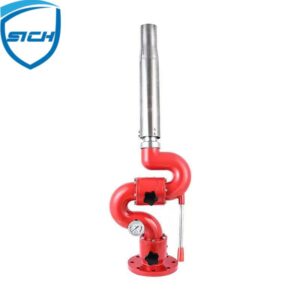Communication systems integrated with water cannons for coordination during firefighting operations are crucial for ensuring effective communication between personnel involved in firefighting efforts.
Here are some communication systems commonly used in conjunction with water cannons:
- Two-Way Radios: Two-way radios are essential communication tools used to facilitate real-time communication between firefighters, incident commanders, and other personnel involved in firefighting operations. Radios allow for voice communication, enabling firefighters to coordinate their actions, relay important information, and request assistance as needed.
- Intercom Systems: Intercom systems installed on firefighting vehicles or apparatus allow crew members to communicate with each other within the vehicle, including the operator of the water cannon. Intercom systems provide clear audio communication, even in noisy environments, ensuring effective coordination during firefighting operations.
- Headsets: Headsets equipped with microphones and earpieces enable hands-free communication for water cannon operators and other personnel involved in firefighting operations. Headsets allow operators to communicate with each other and with command personnel without having to hold a radio or intercom device.
- Integrated Control Panels: Some modern water cannons feature integrated control panels with built-in communication interfaces, allowing operators to communicate directly with other firefighting personnel or command centers. These control panels may include features such as voice communication, status updates, and alarms/alerts.
- Mobile Data Terminals (MDTs): MDTs installed in firefighting vehicles provide access to digital communication networks, allowing firefighters to send and receive messages, access maps and building plans, and receive real-time updates from incident commanders. MDTs enhance situational awareness and coordination during firefighting operations.
- Public Address (PA) Systems: PA systems installed on firefighting vehicles or apparatus enable operators to broadcast voice messages or warnings to nearby personnel or the public. PA systems can be used to provide instructions, warnings, or updates during firefighting operations.
- Satellite Communication Systems: In remote or isolated areas where traditional communication networks may be unavailable, satellite communication systems can provide a reliable means of communication for firefighting personnel. Satellite phones or satellite-based data terminals allow firefighters to stay connected and coordinate their efforts, even in challenging environments.
These communication systems work together to facilitate effective coordination and collaboration among firefighting personnel, ensuring that water cannon operators and other team members can communicate efficiently and respond quickly to firefighting emergencies.
